Species Migration
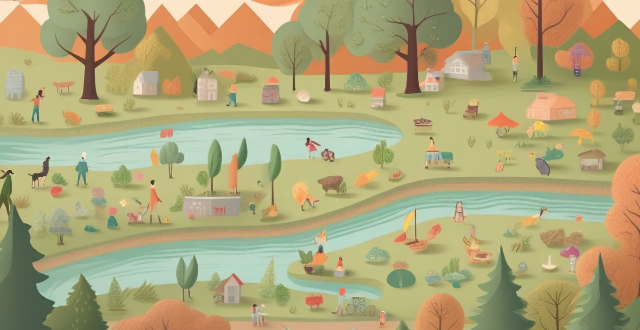
How does climate change affect migration patterns ?
Climate change has significant impacts on migration patterns, affecting routes, timing, and even causing species displacement. Traditional migration pathways become unviable due to rising temperatures and shifting habitats. Altered seasonality disrupts the synchrony between migration events and ecological processes like plant blooming or insect emergence. In extreme cases, species may be forced out of their native ranges entirely. Mitigating strategies include habitat protection, climate change mitigation efforts, adaptation strategies, research and monitoring, and public awareness campaigns.
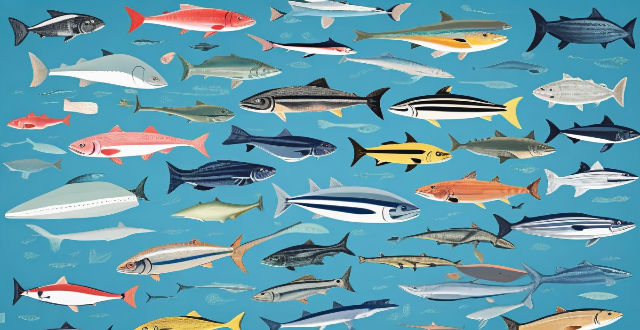
How do changing ocean temperatures influence fish migration patterns ?
This article explores how changing ocean temperatures influence fish migration patterns, affecting fish populations and the fishing industry. Water temperature plays a crucial role in fish metabolism, growth rates, reproduction, and survival, making it essential to understand its impact on migration patterns. Changing ocean temperatures can alter habitat conditions, food availability, cause physiological stress, and affect reproduction, leading to decreased abundance, shifting fishing grounds, economic losses, and ecosystem disruption. Monitoring ocean temperatures and adapting fishing practices are crucial for managing fish populations sustainably and mitigating the negative impacts of climate change on marine ecosystems.

How does climate change influence the migration patterns of wildlife used for recreational hunting and fishing ?
Climate change significantly affects wildlife migration patterns, influencing recreational hunting and fishing. Altered habitats, changes in prey availability, timing shifts, extreme weather, and human intervention are key factors. Ongoing monitoring and adaptive management are necessary for sustainable practices.

How might climate change influence the distribution and abundance of aquatic species ?
Climate change significantly impacts the distribution and abundance of aquatic species by altering water temperature, pH levels, salinity, and oxygen availability. These changes affect habitats and life cycles of aquatic organisms, causing direct and indirect effects on their survival, growth, reproduction, and community interactions. Some species show resilience through genetic adaptation or phenotypic plasticity. Proactive conservation efforts are crucial for maintaining biodiversity and ecosystem health amid climate shifts.

What are the impacts of global warming on ecosystems and species diversity ?
Global warming, primarily caused by human activities, significantly impacts ecosystems and species diversity. These effects include habitat loss, altered species interactions, the spread of invasive species, disease proliferation, ocean acidification, melting permafrost, changes in fire regimes, water stress, sea level rise, coral bleaching, increased extinction risk, shifting ranges, population declines, adaptation challenges, loss of genetic diversity, behavioral changes, phenological shifts, reproductive challenges, physiological stress, and disrupted mutualisms. Addressing these issues requires immediate action to reduce greenhouse gas emissions and adapt to the changing climate.
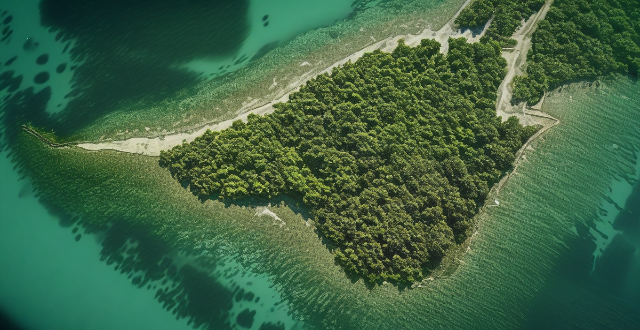
What is the relationship between climate change and loss of habitat for endangered species ?
Climate change is causing significant changes in ecosystems around the world, leading to the loss of habitat for endangered species. Rising temperatures, changing precipitation patterns, sea level rise, and extreme weather events are all factors that contribute to this loss. Endangered species are particularly vulnerable to these changes due to their small populations and limited ranges. Examples of endangered species affected by climate change include polar bears, giant pandas, leatherback turtles, and amphibians. It is essential that we take action to protect these species and their habitats, including reducing greenhouse gas emissions, conserving natural habitats, and developing adaptation strategies.
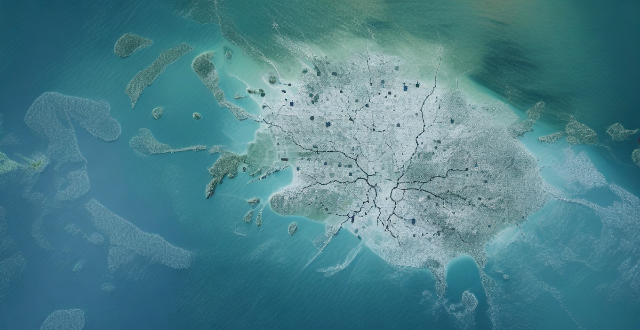
How is global warming impacting biodiversity and endangered species ?
Global warming is impacting biodiversity and endangered species through habitat loss, changes in weather patterns, and increased disease outbreaks. Habitat loss occurs as species are forced to migrate due to rising temperatures, leading to competition for resources and loss of habitats. Changes in weather patterns cause extreme events like droughts, floods, and storms, disrupting ecosystems and potentially leading to species extinction. Additionally, global warming contributes to the spread of diseases among wildlife populations, posing a threat to endangered species. It is crucial to take action to mitigate the effects of global warming and protect vulnerable populations.

What role does climate migration play in national security concerns ?
Climate migration, driven by climate change impacts like sea level rise and extreme weather events, is a growing issue with significant implications for national security. It increases migration pressures, causing economic disruptions, political instability, resource scarcities, and environmental degradation. Addressing these challenges requires a multifaceted approach that includes efforts to mitigate climate change, improve resilience in vulnerable communities, and develop effective strategies for managing migration flows.

How do invasive species interact with climate change to threaten native biodiversity ?
Invasive species and climate change pose significant threats to native biodiversity by exacerbating range expansion, altering competition, increasing predation pressure, degrading habitats, facilitating disease transmission, disrupting mutualisms, having synergistic effects, depleting resources, displacing keystone species, and reducing ecosystem resilience. Integrated management strategies are crucial for mitigating these threats and include habitat restoration, invasive species control, protection of keystone species, and conservation of diverse genetic pools within native species to enhance their adaptability.
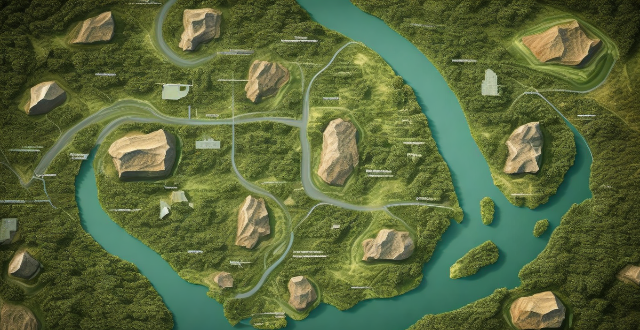
Can climate change cause extinction of certain species ?
Climate change has the potential to cause the extinction of certain species through a variety of mechanisms including rising temperatures, changes in precipitation patterns, loss of habitat, and disruption of food webs. It is essential that we take action to mitigate the effects of climate change and protect vulnerable species before it's too late.

What are the impacts of climate-induced migration on host communities ?
Climate change has become a significant global issue that affects various aspects of life, including migration. Migrants often bring new skills and knowledge to their host communities, which can help boost local economies. However, climate-induced migration can also strain resources in host communities and increase social tensions between migrants and local residents. Additionally, it can have negative environmental impacts on host communities. It is crucial for governments and organizations to work together to address these challenges and ensure that climate-induced migration benefits everyone involved.
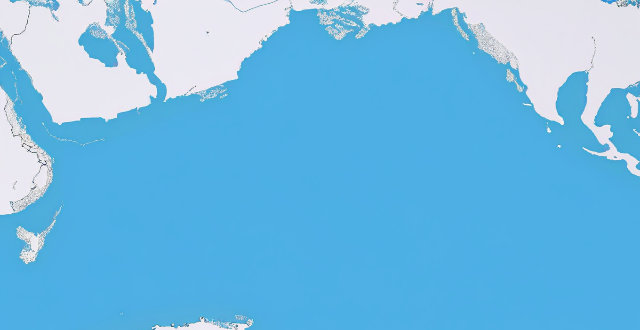
How might global warming influence future patterns of human migration ?
Global warming is poised to significantly influence future patterns of human migration through various channels, including sea level rise, changes in agricultural zones, extreme weather events, economic impacts, health considerations, and social and political factors. These changes will contribute to shifts in where and how humans choose to live, forcing coastal communities to relocate, increasing the risk of flooding in currently habitable areas, movement away from regions that become too hot or dry for farming, shifts toward more favorable climates for growing crops, increased frequency and intensity of extreme weather events, decline in traditional industries like fishing or agriculture in certain regions due to changing conditions, growth in new industries related to renewable energy or climate adaptation in other areas attracting workers, spread of diseases like malaria and dengue fever to new regions as the organisms that carry them move into warmer areas making some areas less hospitable for human habitation due to heat-related illnesses becoming more common, conflicts over resources like water and arable land which may be exacerbated by climate change, and government policies on resettlement and climate adaptation measures that could either facilitate or hinder migration.

How do invasive species affect biodiversity ?
Invasive species can have a significant impact on native biodiversity, both positively and negatively. They can outcompete and replace native species, leading to changes in community structure and ecosystem function. Invasive species can also cause damage to infrastructure and human health through the spread of disease or destruction of habitats. Management strategies for invasive species include prevention measures such as quarantines and biosecurity protocols, as well as control measures such as eradication programs and habitat restoration. It is important to consider the costs and benefits of each strategy when developing a management plan.

How can international law and policy help mitigate the effects of climate-induced migration ?
The text discusses how international law and policy can mitigate the effects of climate-induced migration. It outlines frameworks for cooperation, protection measures, and adaptation and resilience building strategies. The UNFCCC, Global Compacts for Migration, and regional cooperation mechanisms are highlighted as frameworks for cooperation. Protection measures include refugee status recognition, non-refoulement obligations, and the responsibility to protect. Adaptation and resilience building strategies involve development assistance, capacity building, and knowledge sharing. The conclusion emphasizes the urgency of pursuing these efforts to prevent human suffering and state fragility due to climate-induced migration.
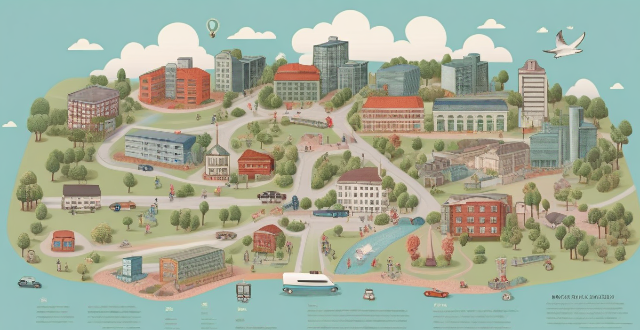
How has climate change influenced migration patterns and refugee crises around the world ?
The article discusses how climate change is a significant driver of human migration and refugee crises worldwide. It affects not only environmental stability but also socio-economic structures and geopolitical dynamics. The impact of climate change on migration patterns includes direct environmental displacement, indirect socio-economic effects, and geopolitical consequences. The challenges of adaptation and resilience include urbanization pressure and integration difficulties. International responses include policy development, humanitarian aid, and funding for adaptation. The article concludes that the future will likely see an increase in climate-related migration unless significant efforts are made to curb greenhouse gas emissions and prepare vulnerable populations for the changing climate.

How can we address the challenges posed by climate-related displacement and migration ?
The growing challenge of climate-related displacement and migration, or "climate migration," is intensifying due to the impacts of climate change such as sea-level rise, extreme weather events, droughts, and more. Addressing this issue requires a comprehensive approach that includes strengthening resilience through infrastructure development, sustainable agriculture, and community education; establishing legal and policy frameworks for clear policies on displacement, international cooperation, and domestic legislation; providing humanitarian assistance and support through emergency relief, long-term support systems, and health services; creating financial mechanisms and investments like climate funds, insurance schemes, and compensation for losses; and planning and coordinating efforts through forecasting and early warning systems, coordinated response plans, and urban and rural planning. By implementing these strategies, we can build a more resilient future and better support vulnerable populations affected by climate change.

How should we prioritize the protection of endangered species and ecosystems ?
The protection of endangered species and ecosystems is a critical issue that requires immediate attention. Here are some strategies we can employ to prioritize their protection: 1. Conduct comprehensive surveys and studies to identify and understand the current state of endangered species and ecosystems. 2. Develop effective legislation and policies, such as establishing protected areas, regulating hunting and fishing, and promoting sustainable development. 3. Raise public awareness and involvement through education programs, community involvement, and media campaigns. 4. Collaborate internationally by signing international agreements, sharing knowledge and resources, and coordinating conservation efforts. By taking these steps, we can work towards ensuring the survival of our planet's diverse flora and fauna for future generations.

How does climate vulnerability affect the environment ?
Climate vulnerability refers to the degree to which a system is susceptible to, and unable to cope with, adverse effects of climate change. This vulnerability can have profound impacts on the environment, affecting ecosystems, biodiversity, and the services they provide to humans. Key points include changes in ecosystems, loss of biodiversity, impacts on water resources, food security, and coastal systems. These changes can lead to altered migration patterns, changes in vegetation, disruption of life cycles, habitat loss, extreme weather events, invasive species, changes in snowmelt patterns, rainfall changes, shifting climate zones, pest and disease outbreaks, sea level rise, and ocean acidification. Addressing climate change is essential for the survival of countless species and the well-being of human societies that depend on the services provided by healthy ecosystems.

What are the potential long-term consequences of climate change for future generations ?
The potential long-term consequences of climate change for future generations include environmental, social, and economic impacts. Environmentally, rising sea levels can cause coastal erosion and loss of island nations, while extreme weather events like hurricanes and wildfires become more frequent. Biodiversity loss is also a major concern, with species extinction and the spread of invasive species disrupting ecosystems. Socially, food security is threatened by changes in crop yields and water scarcity, while health risks increase due to heat-related illnesses and the spread of diseases. Displacement and migration may lead to conflict and instability. Economically, decreased productivity in agriculture and fisheries, increased adaptation and mitigation costs, and job losses contribute to economic instability. Addressing climate change requires global cooperation and significant investments in both adaptation and mitigation strategies to ensure a sustainable future.

What are the impacts of climate change on tree species diversity in forests ?
Climate change significantly impacts tree species diversity in forests through altered growth and reproduction patterns, range shifts, disturbance regimes, direct physiological effects, and changes in ecosystem services. These impacts not only affect the health and structure of forests but also have broader ecological and societal implications.

What role do protected areas play in maintaining biodiversity ?
The article discusses the importance of protected areas in maintaining biodiversity, highlighting their roles in habitat preservation, species protection, and ecosystem services. It also addresses the challenges of effective management, connectivity, and global cooperation for conservation efforts. The text emphasizes that protected areas are essential for safeguarding endangered species, supporting ecological processes, and mitigating climate change, but their success depends on balanced management, sufficient resources, and international collaboration.
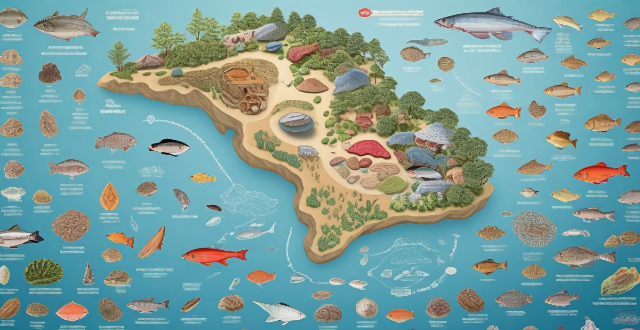
How does climate change affect biodiversity ?
This article explores how climate change affects biodiversity by altering ecosystems, species distribution, and genetic diversity. It discusses the impact of rising temperatures on habitat loss and altered precipitation patterns, ocean acidification on coral reefs and phytoplankton communities, and extreme weather events on fires and storms. The article also highlights the loss of genetic diversity due to reduced resilience and functional homogeneity in ecosystems, as well as inbreeding depression and genetic bottlenecks in species. Addressing climate change is essential for conserving biodiversity and maintaining healthy ecosystems.

What is the impact of climate change on biodiversity and conservation law ?
Climate change is a significant threat to biodiversity, affecting species distribution, abundance, and behavior. This has implications for conservation law, which aims to protect and manage biodiversity. The impact of climate change on biodiversity includes habitat loss and fragmentation, altered ecosystem functioning, and increased risk of species extinction. Conservation law must evolve to address these challenges, incorporating resilience measures into conservation strategies and fostering collaboration across sectors. By taking a proactive approach, we can help ensure that future generations continue to benefit from the diverse array of species and ecosystems that make up our planet's natural heritage.

What role do governments play in managing climate-induced migration ?
气候变化引发的移民问题是一个复杂的全球性议题,需要各国政府协调和战略性的响应。随着气候变化加剧环境状况,越来越多的人被迫离开家园寻找更安全、更可持续的生活条件。这一现象给政府带来了重大挑战,它们必须在满足被迫迁移人口的需求与国家的社会经济及政治现实之间找到平衡。本文探讨了政府在管理由气候变化引发的移民问题中扮演的各种角色,包括提供人道主义援助和支持、开发长期解决方案、促进合法移民途径、解决潜在的社会经济问题以及进行国际合作等方面。通过采取全面的方法来处理这一复杂问题,政府可以帮助确保脆弱群体免受气候变化最严重影响的同时,也为未来构建更有韧性的社区。

What are the main causes of climate refugee migration ?
Climate refugees are people forced to leave homes due to climate change impacts, including natural disasters, sea-level rise, and changes in agricultural productivity. These factors have led to displacement of millions globally, requiring a comprehensive approach to mitigate effects and support affected individuals.

What are the gender dimensions of climate-induced displacement and migration ?
The text discusses the gender dimensions of climate-induced displacement and migration. Women and girls are often more vulnerable to health and safety risks during displacement, face challenges in accessing essential resources such as food, water, shelter, and education, and may lose social networks and support systems that are crucial for their well-being. To address these unique challenges, it is essential to incorporate gender-specific needs into humanitarian response efforts, including providing safe spaces, ensuring access to basic needs, supporting economic empowerment, and promoting gender equality.

What are some examples of successful adaptation strategies for climate-induced migration ?
Successful adaptation strategies for climate-induced migration include resilient infrastructure development, economic diversification, community-based adaptation, and environmental conservation and restoration. These approaches aim to increase community resilience, reduce reliance on climate-sensitive sectors, empower local decision-making, and protect ecosystems.

What are the consequences of climate change for wildlife and ecosystems ?
Climate change has significant consequences for wildlife and ecosystems, including habitat loss, changes in species distribution, impacts on biodiversity, altered ecological processes, invasive species spread, pest outbreaks, and human health risks. It is crucial to take action to mitigate these impacts by reducing greenhouse gas emissions and implementing conservation measures.
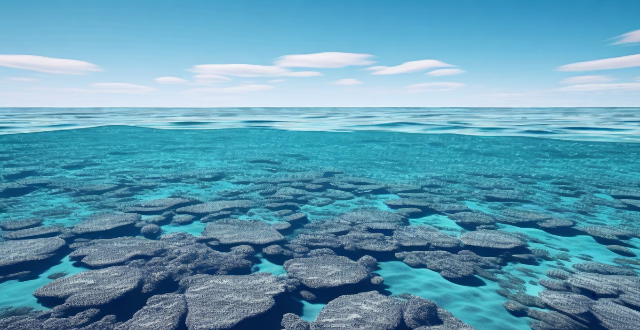
What are the impacts of global warming on marine life and fish populations ?
The provided text discusses the impacts of global warming on marine life, particularly fish populations. It outlines how rising ocean temperatures alter habitats and affect metabolic rates; how ocean acidification disrupts calcification processes; how changes in currents and water circulation alter migration patterns and species ranges; the loss of coral reefs and its implications; the effects of extreme weather events on marine environments; and the challenges these changes present for resource management. The conclusion emphasizes the need for collective efforts to mitigate the effects of global warming on oceans.

How do climate change and biodiversity loss intersect ?
Climate change and biodiversity loss are interconnected issues that impact each other significantly. Climate change can lead to habitat loss, altered migration patterns, and changes in prey-predator relationships, all of which can result in reduced populations or even extinction for some species. On the other hand, biodiversity loss can reduce carbon sequestration, compromise soil health and water regulation, and impair ecosystem services that help mitigate climate change. Urgent action is needed from all stakeholders to address these challenges and protect our planet's fragile ecosystems.